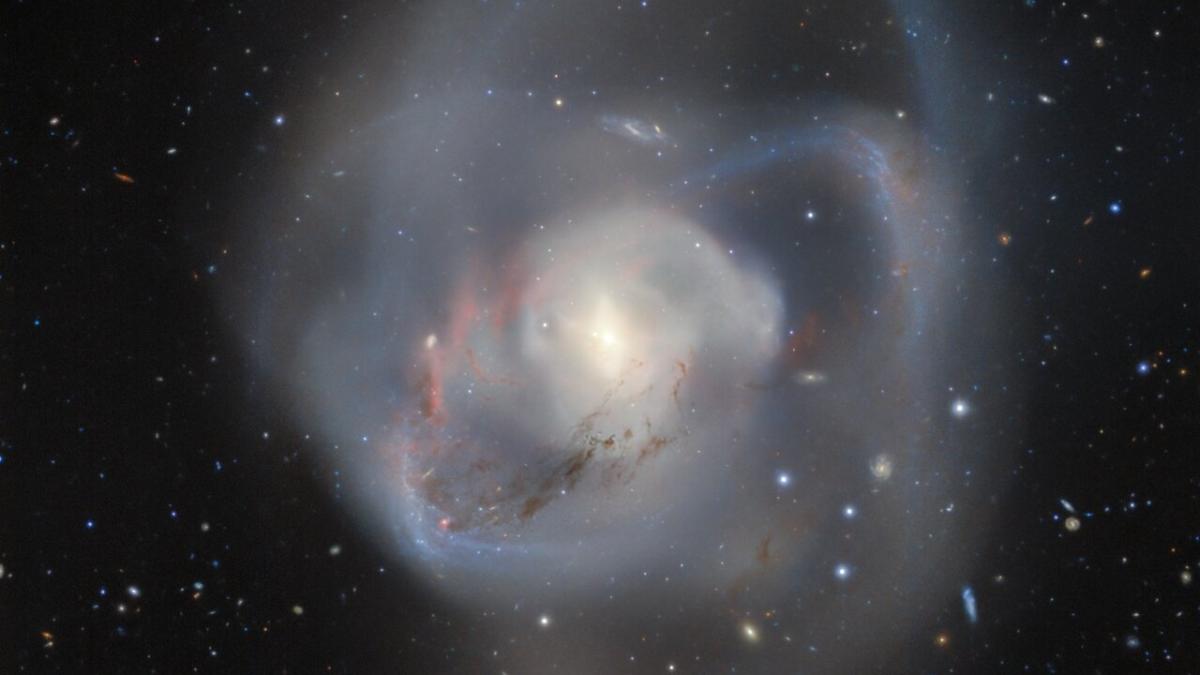Astronomers have made a remarkable discovery: a pair of massive black holes lurking in the aftermath of a cosmic collision that took place about a billion years ago between two spiral galaxies. Located approximately 90 million light-years away from us, these black holes were found in the chaotic core of the merged galaxy NGC 7727. The researchers used the Gemini South telescope, situated on Cerro Pachón mountain in the Chilean Andes, to identify this binary system of supermassive black holes.
The NGC 7727 galaxy is of particular interest to scientists because it gives us a glimpse into the future of our own Milky Way. In about 4.5 billion years, the Milky Way is expected to collide with the neighboring spiral galaxy Andromeda. Currently, Andromeda is located 2.5 million light-years away from us.
The newly discovered supermassive black holes are believed to orbit each other and have masses of 154 million times and 6.3 million times that of the sun, respectively. Currently, they are about 1,600 light-years apart. However, as they continue to orbit, they will eventually collide and merge, creating an even larger supermassive black hole with a combined mass.
This collision between the black holes generates gravitational waves, which cause the black holes to draw closer together over time. Astronomers estimate that the black holes will meet in approximately 250 million years.

(Image credit: International Gemini Observatory/NOIRLab/NSF/AURA)
Cosmic chaos in colliding galaxies
During the early stages of the galaxy merger that led to the creation of NGC 7727, these two black holes would have caused havoc. The gravitational dance between the merging galaxies would have ejected stars and dust from their centers. Stray objects would then be pulled into the immense gravitational field of the supermassive black holes, resulting in a dramatic change in the shape of the galaxies.
NGC 7727, located in the constellation of Aquarius, serves as a prime example of what happens when spiral galaxies collide. The merger has transformed the individual spiral arms into a disorganized and shapeless mass.
The Gemini South telescope’s instrument, Gemini Multi-Object Spectrograph (GMOS), captured a detailed image of this chaotic “super” galaxy. The image showcases vast swirls of interstellar dust and gas, resembling nebulous spider webs encircling the merging hearts of the progenitor galaxies.
The aftermath of the collision is also characterized by intense star formation, known as “starburst regions.” These regions arise when gas-rich galaxies collide, leading to the creation of dense gas and dust that facilitate the birth of new stars. The presence


